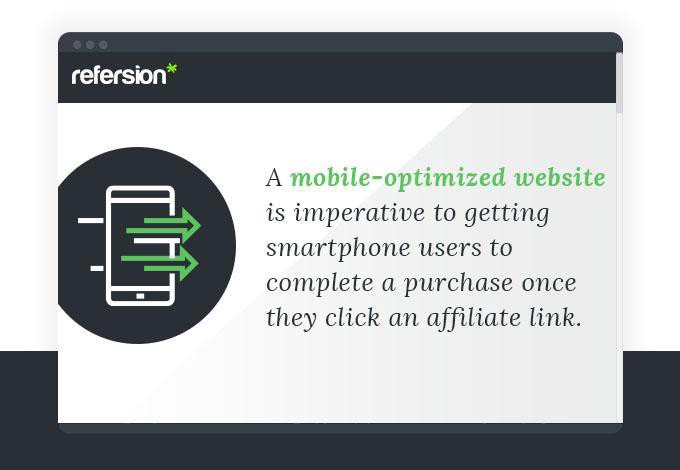The holiday season is the most important time of year for shoppers and businesses, but it’s hard to make products visible amongst all of the advertising noise. While offering steep discounts can help businesses stand out, thin profit margins and heavy competition have made this even more challenging in recent years.
Affiliate marketing is the fastest and easiest way to remain visible when customers tune out holiday advertising. Some best practices for affiliate marketing are true year-round, but the holiday season presents some unique challenges. Content publishers are busy with life outside of their blog or social media, and to get their attention, marketers have to think outside the box.
Be sure to RSVP to our next live webinar to learn how Refersion can power your affiliate marketing strategy.

Getting affiliates to publish new content during the holidays requires meeting them halfway. Proactive communication and ample incentives are the best way to keep them engaged. Metrics and website optimization also play a role, so use good affiliate marketing software and work closely with the rest of your business team to make the holiday shopping season a success.
Check for Trends
Fashion, electronics, home décor, and other markets all have their own trends, and these are inevitably reflected in holiday shopping. Even reliable markets like electronics can sometimes be subject to shifts in trends, especially as new gadgets and software are introduced. Depending on niche and target demographics, identifying trends can be difficult. Instead of opening Twitter and searching hashtags, it may be wiser to browse magazines that cater to a given niche or demographic, especially for older or hobbyist customers.

If something in your product list is potentially trendy, highlight it for affiliates as soon as possible, or pitch an idea for an entire post around that trend. Of course, not all shoppers or affiliates are up to date on the latest trends. Trends from the past 3–5 years may also still be popular with many customers, so don’t hesitate to highlight products that are a little older or are perennial favorites.
Provide Unique Content
While family-friendly messages and holiday cheer are great, they don’t do much to stand out from the crowd. Radically shifting from a marketing campaign’s usual focus can be jarring for customers, but something fun and playful can be a welcome addition to an affiliate’s content. Take a look at your product listings to see if anything could be a potentially memorable or thoughtful gift. Pitch a few of these to affiliates as a product to feature or review, taking care to tailor suggestions to their usual audience. While this takes a little time, it should be fairly easy with some in-depth knowledge of your product catalog.
Make Easy-to-Share Media
While some affiliates take pride in making all their own content, others don’t mind borrowing premade graphics and other goodies. Since visuals are especially crucial for standing out in a sea of advertisements, put some extra time into making eye-catching banners and holiday-inspired photo spreads for affiliates to use.
If possible, start preparing these well before Black Friday and the resulting flood of emails to and from affiliates. Remember that since many affiliates work with multiple businesses, those affiliates will be pressed for time and attention. Sending a plain text email to advertise a sale won’t do much to capture their imagination.
Keep an Eye on Metrics
Holiday gift trends change every year, and social media metrics change even more often. Making the most of marketing budgets requires finding what’s working and doing more of it. Check metrics weekly, if not more frequently, and take note of which affiliates are getting results. If a particular product is gaining traction with one affiliate, try sending that product information around to other affiliates with a note about its popularity.

Products or messaging that aren’t catching on should be dropped entirely. An exception to this is if there’s an affiliate with a completely different audience who may find success with these non-trending products, but you will have to study the metrics and market trends to see where these products could be more effective.
Focus on Existing Affiliates
It can be tempting to try to round up tons of new affiliates in the lead-up to Christmas. Visibility is vital during this time, and in theory, an increased quantity of affiliates will translate to some increase in sales. Yet, the holidays are a busy time of year for everyone, and communicating with brand-new affiliates effectively can be difficult during this period. While it’s wise to identify some great new affiliates with reach into a unique niche, don’t spend too much time and energy trying to improve reach into areas that are already covered. The holidays are already busy enough without spending precious time on identifying potential influencers.
This could be a good time to review your affiliate tracking software and reach out to affiliates who haven’t made any sales lately. Check-in on previously active affiliates who haven’t posted about your products recently and ask them what kind of content they’re looking to publish during the holiday season. Let them know what new products are available and how those fit in with potential holiday content. By re-engaging with these affiliates, you’re showing that you still value their efforts and their audience, and they may be willing to give your content priority.
Target Existing Customers
While it’s always exciting to reach new customers, the holidays aren’t necessarily the best time to do it. Though affiliate content stands out against a sea of other advertisements, it still may not sway customers away from their tried-and-true holiday retailers unless they’re shopping for products in a specific niche. Look closely at metrics to determine which affiliates reach your existing customers, then hone in on those affiliates. If there’s a large group of customers who don’t seem to be within reach of current affiliates, that may be a group that’s worth recruiting a new affiliate for.

For example, adults over 65 can be challenging to reach through social media, so reaching existing customers who are in that demographic may require some in-depth research into potential affiliates. Find out how those customers found your business in the first place and use that route to find potential affiliates.
Give Advance Notice of Sales
It’s best to let affiliates know ahead of time if there will be free shipping, flash sales, or any other promotions during the holiday season. Busy publishers might not see an email announcing a sale until a full day after it’s sent. Not only does this give them time to prepare, but it’s also a professional courtesy — and everyone likes to be the first to know big news.
This is especially important in the lead-up to Black Friday and Cyber Monday, and the last week before Christmas. Black Friday and Cyber Mondays are the biggest sale days of the year for retailers, and the week before Christmas is the last chance to make sales. Last-minute shoppers are a great potential target for affiliate marketing, as they’ll be on the hunt for an online retailer that can deliver exactly what they want.

Put Your “Best” Foot Forward
According to search engine traffic analysis from Google, consumers are increasingly using search terms that start with “best” — like “best electric razor” and “best new SUV.” This means that affiliate content that uses these terms is more important than ever. This language is also being worked into SEO rankings, which means that utilizing these phrases can help boost your content in search engines.
When reaching out to affiliates, try to use these terms to get their attention. Instead of sending them a list of all the products you think may interest them, focus on the best ones. Depending on your target demographic and the affiliate’s niche, a potential list could be “5 Best Gadgets for Smartphone Users” or “Our 3 Best Digital Cameras.” Publishers are likely to echo that language, or at least allude to it when creating their content.
While it’s savvy to point affiliates to high-priced items that result in larger commissions, keep in mind that the “best” item for an affiliate to feature may not necessarily be the most expensive. If an affiliate’s niche is college students, for example, that affiliate may be looking for the “best” item available on a smaller budget.
Get Smartphone-Optimized
There are around three billion smartphone users in the world today, but taking advantage of this requires a multi-faceted approach. Simply having a social media presence isn’t enough to get shoppers to make a purchase from their phones.

A mobile-optimized website is imperative to getting smartphone users to complete a purchase once they click an affiliate link. A website that is slow or unintuitive on mobile devices will eventually result in lost sales and may even lose affiliates’ interest over time. If your business offers an app or is otherwise especially mobile-friendly, make sure affiliates are aware of this so they can mention it in their content.
Offer Incentives
Affiliates are juggling many things at once during the holidays and might be overwhelmed with gift shopping and formulating plans with their families and friends before they ever open their emails. Getting their attention during November and December may require some extra incentives.
Since their time is at a premium, consider offering bonuses or increasing commissions during the lead-up to Christmas. Even a small increase in compensation for publishers can be enough to motivate them to make content during the holiday season.
Also, ask influencers if they would be interested in doing unboxing videos in exchange for free goods. Unboxing videos and other video content are popular year-round, but free goods are a great incentive during the busy holidays. Save this perk for your top trusted affiliates, though, as new affiliates may just ignore the package until after the holidays.

Make a Calendar
Planning is critical for any marketing campaign, but it’s critical to reaching customers at appropriate times during the holidays. Start researching and planning as early as possible. Ideally, a plan should be drafted by late September and tweaked as new trends emerge or if a valuable product is released. Make a note of key cut-off dates, like the ends of major sales and last day for guaranteed shipping before Christmas and wrap up affiliate outreach before then. Since it takes affiliates time to post and spread content, it’s probably not worth doing Christmas outreach after December 21st unless overnight shipping is available.
Also, be mindful of how frequently affiliates will be receiving emails, as excessive emails can quickly become a nuisance during the holidays. Aim for no more than one email every two days, unless an affiliate replies. If an end-of-the-year sale is in the works, avoid emailing on Christmas Day with anything other than a “Happy Holidays” message. September is also the ideal time to identify gaps in affiliate publisher reach. Recruitment of affiliates takes time, so any new potential publishers for the holiday season should be invited no later than mid-October if possible.
Work Smarter — and More Sincerely
Sending mass emails to affiliates every day isn’t going to get results, and neither is spoon-feeding them lectures on metrics and SEO keywords. What gets publishers’ attention during the holidays is sincere, open communication about products and content that matters to them.

Remember to allow affiliates’ creativity and voice to shine. User-generated content means less work for you, and more chances for publishers to set themselves apart from the crowd of influencers growing on social media. Encouraging affiliates to be unique and honest results in a trusting relationship that will last long after the holidays are over.
The Final Word
The holiday shopping season offers new opportunities for affiliate marketing. However, to make the most of these opportunities, you have to plan ahead. Craft a plan that can help you reach both new customers and existing customers. Stay aware of trends, and plan to strategize about your holiday season campaigns.
Most importantly, let both your personality and affiliates’ personalities shine. You don’t want to produce more holiday marketing fluff; instead, ensure your marketing content is sophisticated, sincere, and smart. If you do that, you and your affiliates are almost certain to do well during the holiday season.
Join our live webinar and learn how Refersion can manage, track, and grow your affiliate marketing program.



